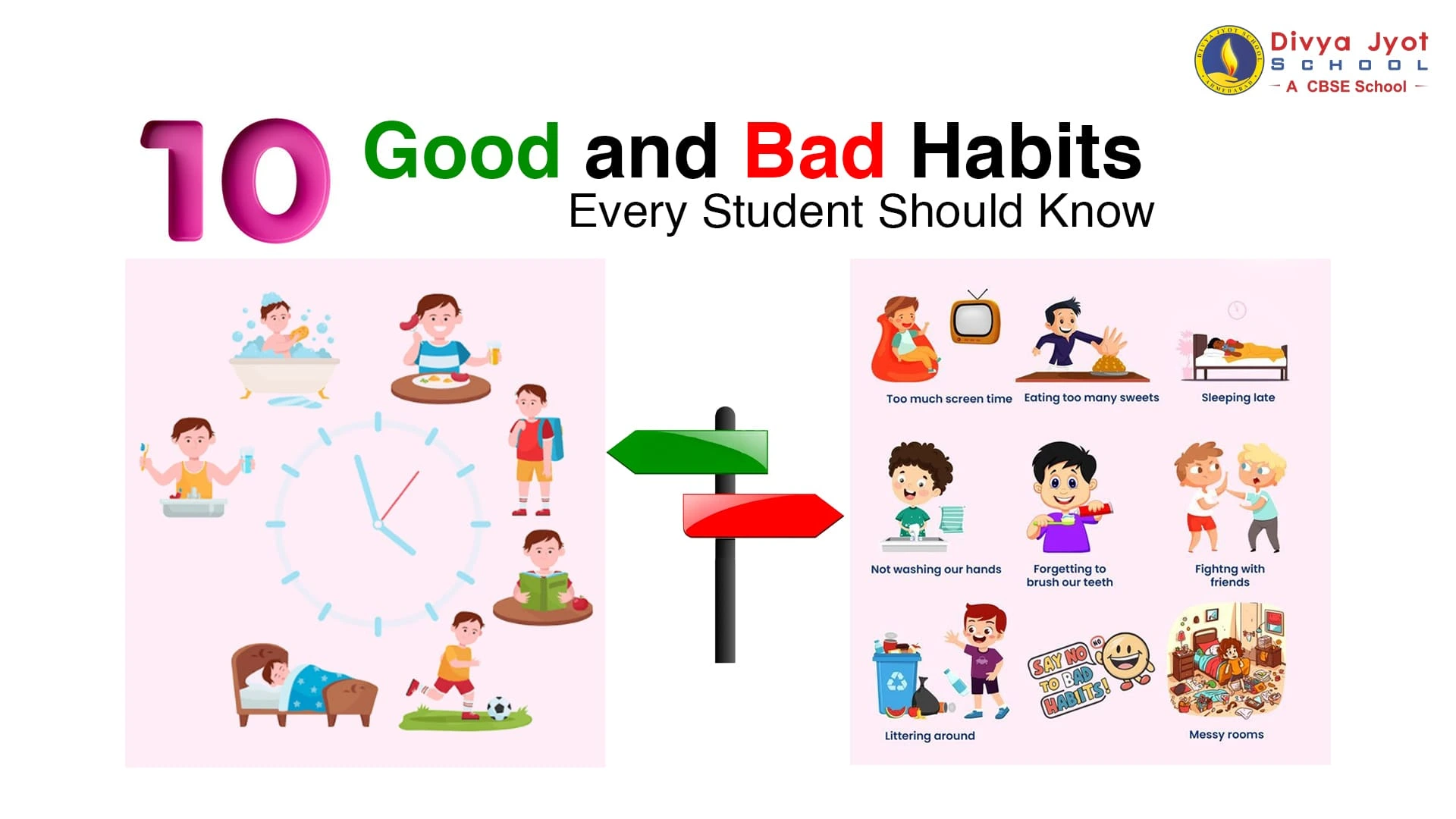The walk that a student goes through is not simply based on grades but on the routine that they follow day in and day out.
The minor, repetitive behaviors, both constructive and destructive, add up over time to have tremendous impacts on academic performance, physical and mental well-being, and general character growth.
Understanding the difference between good habits and bad habits for students is the first step toward intentional growth.
This isn’t about perfection. It has to do with awareness, knowing what routines are working on your goals and which routines are keeping you stuck. By the end of this guide, you’ll have a clear map of the good habits for students to cultivate and the pitfalls to avoid, empowering you to build a foundation for lasting success.
What Are Habits and Why Do They Matter in Student Life?
Imagine that habits are the autopilot of your brain. They are tiny, almost subconscious, day-to-day routines and behaviors that we conduct in our everyday life. These automatic actions are the builders of your academic growth in student life, and they will silently build your focus, efficiency, and eventually your success.
Some good habits for students are “keystone habits.” These are powerful routines that act as a foundation, creating a domino effect of other positive behaviors. Its ripple effects include:
Reduces Morning Stress: Waking up knowing what you are going to do gets you out of decision fatigue and pandemonium.
Bias towards tasks subconsciously: Your brain starts to think about your tasks and arrange them at night.
Frees Up Head Space: When you delegate your schedule to a list, you save mental energy to do serious study and solve complicated problems.
Result in Better Sleep: Writing tasks help purge the mental catalog, eliminating anxiety and enhancing sleep.
Increases Achievement: This systematic measure is also a direct translation to better time management and academic outcomes.
9 Good Habits Every Student Should Practice
Building a strong foundation for success starts with cultivating the right routines. This list of good habits for students is designed to boost academic performance, well-being, and personal growth.
- Master Time Blocking: All tasks in a planner have specific time slots that have to be set in order to fight procrastination.
- Make Active Reading a Priority: Read and write questions and summaries in margins to increase retention.
- Adopt Focused Study Sprits: 25-minute sessions broken by five-minute resting intervals are the most effective at keeping productivity high.
- Develop Strategic Curiosity: At the end of the lesson, pose how and why questions to develop more conceptual knowledge.
- Be digital intentionally: Silence notifications and block sites to secure your concentration on work.
- Fuel: You want to focus, eat nuts or fruit instead of sweet snacks to keep your blood sugar steady and improve your concentration.
- Create a Pre-Session Ritual: Take two minutes at the start of the session to formulate goals to get your brain ready to work hard.
- Read Proactively: Reread all the weekly notes in 10 minutes to take advantage of long-term memory.
- Be a Good Conversationist: Be respectful, ask questions, and listen to reinforce communication and understanding.
9 Bad Habits for Students to Avoid
Success isn’t just about building good routines; it’s about dismantling the bad ones that silently undermine progress. This list of bad habits for kids and teens highlights common pitfalls and their very real consequences.
- Chronic Procrastination: Postponing work leads to anxiety, low quality of work, and sleep loss.
- Digital Distraction Loops: Browsing during study destroys concentration.
- Irregular Sleep Patterns: Sleep deprivation negatively affects memory, cognition, and mood.
- Living on Junk Food: Sugary foods lead to energy decline, brain fog, and lack of concentration.
- The Comparison Trap: Comparison to peers undermines self-esteem and adds stress levels that are not needed.
- Passive Learning: Marking but not mastering. Passive learning gives the impression of understanding the content, but not mastering it.
- Cramming: The last-minute study only retains the information on a short-term basis and ensures that the information is forgotten in a short time.
- Crying Wolf When at a loss: Turning little misunderstandings into huge gaps in knowledge.
- Cluttered Workspace: A cluttered workspace decreases concentration and consumes brainpower.
How to Replace Bad Habits with Good Ones
The ability to replace bad habits with good habits and vice versa is a skill. This step-by-step plan will help you achieve long-lasting change.
Begin with brutal awareness: Find out what cues and rewards are motivating your bad habit.
Change in very small steps: It should be so easy that you cannot say no to the new habit.
Take advantage of the habit-stacking technique: Attach your new habit to an existing, automatic process.
Example Stack: “I will write one priority per day (new habit) after I pour my morning coffee (current habit).
Engineer your surroundings to succeed: Take away the stimuli that encourage the bad habits and put the stimuli that encourage the good habits on the front burner.
Monitor the progress: A calendar or a habit tracker can be used as a dose of motivation when a check is made.
Planning for bad days: Plan how you will get back on your feet after falling without giving up.
Role of Parents and Teachers in Building Student Habits
- Model desired behaviors daily to demonstrate habits in action.
- Create consistent home and classroom routines for structure.
- Provide specific, encouraging feedback rather than generic praise.
- Use visual habit trackers to make progress tangible and motivating.
- Implement school-wide habit programs like weekly focus challenges.
- Host habit-building workshops for parents to ensure alignment.
- Leverage homeroom time for habit reflection and goal setting.
Conclusion
Your daily routines are the invisible architecture of your academic success. Small, consistent habits, not grand occasional efforts, are what truly shape outcomes over time.
Your Action Plan:
- Start Small: Choose just 1-2 habits from this list to focus on, not everything at once.
- Be Consistent: Practice your chosen habit daily; consistency trumps intensity every time.
- Involve Your Support System: Parents and teachers are your allies—share your goals with them.
Lasting change is a marathon, not a sprint. Begin today, and build your success one habit at a time.





